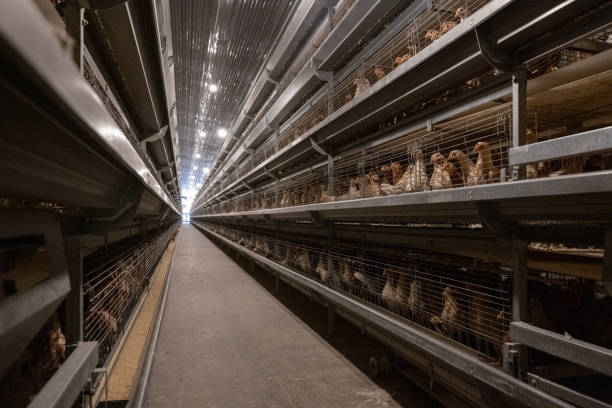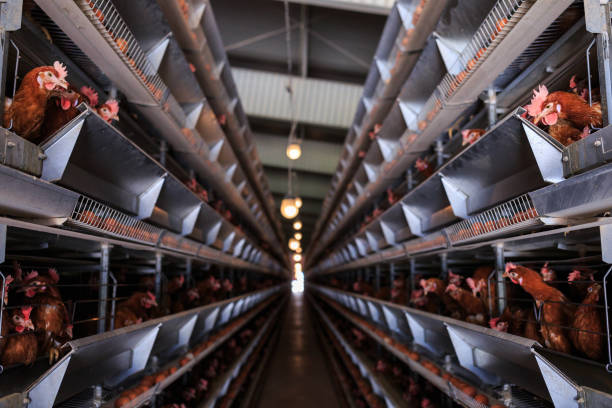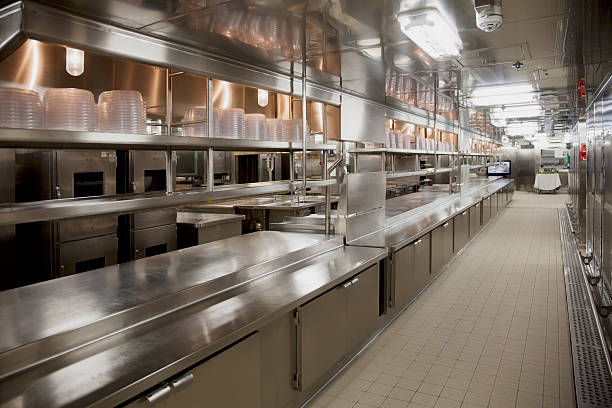
Battery Chicken Cage Solutions for Successful Poultry Farming in Cameroon
Battery Chicken Cage Solutions for Successful Poultry Farming in Cameroon
Cameroon, a country rich in natural resources and agricultural potential, has been experiencing steady growth in its poultry industry. As both domestic demand and export opportunities expand, local farmers are increasingly looking for modern, efficient, and scalable methods to raise chickens. One of the most transformative tools in today’s poultry farming sector is the use of battery chicken cages. These systems not only improve productivity but also enhance disease control, space utilization, and overall operational management—factors that are crucial for Cameroonian farmers navigating a modernizing agricultural landscape.
In this article, we’ll explore why battery chicken cages are becoming the preferred solution for poultry farmers in Cameroon, how they work, and the benefits they bring to both large-scale commercial farms and smaller backyard operations. We’ll also look at how to implement these systems effectively in the Cameroonian context, considering local conditions, logistical realities, and long-term sustainability.

Understanding Battery Chicken Cage Systems
Battery chicken cages, often used in both layer hen and broiler farming, are compact, stacked enclosures designed to optimize the space where chickens are housed. These cages typically come arranged in tiers—some models include automatic feeding, watering, manure collection, and even egg-laying mechanisms for laying hens. While the concept might seem industrial or overly modern for some Cameroonian farmers, the truth is that these systems offer practical solutions to many challenges faced in traditional free-range or deep-litter setups.
There are primarily two types of battery cage systems:
Layer Chicken Battery Cages: These are designed for egg-laying hens and usually feature sloped floors that allow eggs to roll into a collection trough, minimizing damage and contamination.
Broiler Chicken Battery Cages: Though less common than layer cages, broiler cages are gaining traction, especially in urban or space-limited areas, where farmers aim to maximize meat production per square meter.
Both systems can be customized in size, materials, and automation level, making them adaptable to different farm sizes and budgets.
Why Battery Cages are Transforming Poultry Farming in Cameroon
Efficient Land and Space Utilization
One of the biggest concerns for Cameroonian farmers, especially those operating near urban centers or in densely populated regions, is the limited availability of agricultural land. Battery cages offer a vertical solution that dramatically increases bird capacity without expanding the footprint of the farm. For example, a medium-sized building can house thousands of birds in a compact setup, which would not be feasible with traditional ground-based or free-range systems.
Improved Hygiene and Disease Control
Traditional poultry setups in Cameroon often expose birds to damp bedding, parasites, and pathogens. This contributes to high mortality rates and low productivity. Battery cages, on the other hand, isolate birds from their waste, reducing the risk of disease transmission and creating a cleaner environment.
Modern cage systems can incorporate automatic manure removal belts or trays, which allow for daily or weekly collection without disturbing the birds. This is particularly useful in controlling diseases like coccidiosis, avian influenza, and Newcastle disease, which have historically caused losses within the Cameroonian poultry industry.
Cost-Effective and Scalable Operations

For many Cameroonian farmers, investment in equipment must be carefully balanced against returns and maintenance costs. Battery cages, especially those made from high-quality galvanized steel, are durable, corrosion-resistant, and require minimal upkeep. Additionally, the ability to automate feeding, watering, and even egg collection reduces labor costs significantly—something that makes these systems highly attractive to entrepreneurs and medium-scale farmers in particular.
Farmers who start with a small cage system can easily expand by attaching more units, thanks to the standardization seen in most modern battery cage designs. This modular approach gives Cameroonian producers much-needed flexibility to grow as demand increases.
Enhanced Biosecurity and Pest Control
Free-range and pen systems often suffer from predator attacks or infestations by rodents, mites, and ticks. Battery cages, being elevated and enclosed, provide a much safer housing option. The design minimizes contact with wild birds and pests—an important factor when trying to protect birds from avian influenza and other contagious diseases.
Moreover, with controlled access to the cages, it’s easier for farmers to monitor bird behavior, detect sick individuals early, and respond quickly to health threats. This proactive approach can drastically reduce losses and ensure consistent production levels.
Better Egg Quality and Yield in Layer Farms
Egg farmers using battery cages report fewer broken or dirty eggs compared to those using floor-based systems. This is due to the slanted cage bottoms that guide eggs to collection troughs before they can be trampled or soiled. In a growing market like Cameroon where egg quality and sanitation are increasingly important to consumers and food businesses, such improvements can make the difference between success and stagnation.
Additionally, the structured environment helps reduce stress among hens, potentially improving laying cycles and longevity. Well-maintained cages can keep layers in productivity for longer durations (up to two years), ensuring consistent egg yields that support business planning and supply chain stability.
Climate Adaptability in Cameroon
Cameroon’s climate varies from tropical in the coastal regions to semi-arid further north. Housing chickens in battery cages allows for better environmental control. Farmers can build cage sheds with proper ventilation and insulation to protect birds from extreme heat or humidity. Some modern setups even include cooling systems or curtain-sided structures to allow airflow while minimizing rain and dust ingress.
Implementation Challenges and Solutions in Cameroon
While battery cages represent a leap forward in poultry farming, adoption in Cameroon does face practical hurdles. These include:
Initial Investment and Access to Financing: Setting up a quality battery cage system—especially with automation—can be costly. Many smallholder farmers lack access to affordable loans or government support to upgrade their facilities.
Technical Knowledge and Maintenance Capabilities: Managing a modern cage system requires training and understanding of automated feeding lines, waterers, and environmental control equipment. Many Cameroonian farmers still rely on trial-and-error or informal knowledge passed down from relatives.
Power Supply Limitations: Automation requires consistent power, which is still a challenge in some parts of Cameroon. Unreliable grid networks may require investment in solar panels, generators, or battery backups.
Market Access and Transportation: Once production scales up, especially in rural areas, transporting feed and collecting eggs or meat becomes an added burden without strong transport infrastructure.
However, these issues are not insurmountable. For instance, poultry equipment suppliers like Livi Machinery provide modular battery cage systems that are customizable to individual budget levels. Basic setups with manual feeding and egg collection can serve farmers with limited resources. As income grows, farmers can upgrade to automated versions.
Technical training programs—either self-taught or facilitated through agricultural extension services or industry associations—can help local farmers develop the expertise necessary to operate and maintain advanced systems. Meanwhile, the increasing availability of solar power in rural areas offers an alternative to unstable energy supplies, making automation more viable.
Choosing the Right Battery Cage System for Your Farm in Cameroon
When considering a battery cage system for your poultry operation in Cameroon, it’s essential to match the setup with your production goals, scale, and available resources. Key considerations include:
Number of Chickens You Plan to Raise: Start with the total number of birds you want to house and choose a cage system that offers scalability.
Type of Cages (Layer, Broiler, or Both): Decide whether you are entering egg production, meat production, or a mixed model. Each requires specialized cage design.
Manual vs. Automatic Systems: While automation boosts efficiency, it’s not always necessary. Small operations can start with manual systems and upgrade gradually.
Material and Durability: Look for cages made from corrosion-resistant materials like galvanized steel. These tend to last longer and resist damage from weather and wear.
Vendor Reliability and After-sales Service: Invest through trusted suppliers who understand the local market and can offer installation, maintenance, and spare parts when needed.
Partnering with an experienced poultry equipment provider like Livi Machinery ensures you get high-quality, durable battery cage systems suited for Cameroonian conditions. As a global exporter, Livi delivers fully customizable, ready-to-install systems, along with technical support and guidance to ensure farmers can make the most of their new equipment.
Case Studies and Success Stories
Across Cameroon, several progressive farmers are already benefiting from battery cage systems. Take the case of a layer farm near Douala that transitioned from a floor-based system to a 5,000-bird battery cage operation in 2022. Within just a year, the farm saw a 30% increase in egg production, a 50% decrease in labor costs, and significantly improved egg quality. Moreover, disease outbreaks dropped, which led to higher profits and consistent supply to urban markets.
Similarly, a broiler operation in Yaoundé started with a modest battery cage setup to rear meat birds. The farmer found that the cages not only improved feed conversion ratios but also reduced mortality due to improved hygiene. As a result, the business doubled its output within six months and began supplying local hotels and butchers more regularly.
Government and Industry Support
As the poultry sector advances in Cameroon, government agencies and international agricultural development organizations are beginning to take interest in promoting modern farming technologies. Some initiatives provide financing, grants, or technical support to farmers willing to adopt battery cage systems and other improved methods.
Farmers are encouraged to explore local agricultural financing options, work with farmer cooperatives, or collaborate with development agencies to reduce the initial burden of investment. Additionally, industry expos and poultry fairs in Cameroon—often held in major cities like Yaoundé and Douala—are great places to network with suppliers, see equipment in action, and learn best practices.
Conclusion: A Smart Step Toward Modern Poultry Farming
In a country like Cameroon, where poultry is essential to food security and economic development, the shift toward battery chicken cage solutions represents a smart investment in the future of agriculture. These systems offer a sustainable, hygienic, and profitable way to raise layers and broilers, especially as the country strives to meet growing demand and compete in regional markets.
Whether you’re a smallholder farmer looking to increase productivity or a commercial enterprise aiming to optimize operations, battery chicken cages can be tailored to fit your needs. With the right equipment, knowledge, and support, Cameroonian farmers can embrace modern poultry practices that not only boost incomes but also contribute to a more food-secure future.

If you’re ready to take your poultry farming to the next level, Livi Machinery is here to help. Contact us today to explore battery cage solutions designed specifically for the Cameroonian market—durable, adaptable, and built to last.
